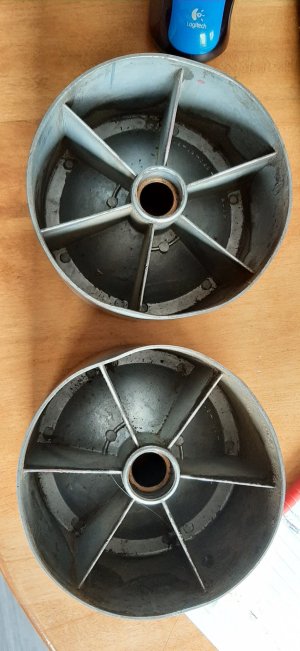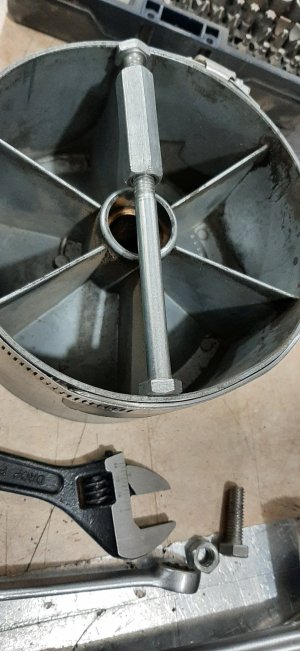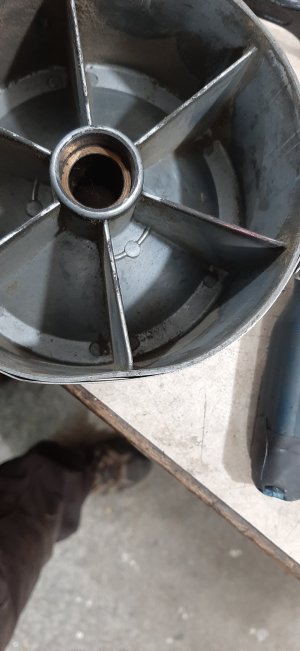A friend of mine has a 6" belt sander. I don't have any photos of it, These are the wheels. He asked if I could fix them. They are dented. I started to straighten them last night but realized if they are white metal or similar, I might break them. A magnet does not stick to them but they seem heavier than what I would expect aluminum to be.
These two wheels run on a common shaft, and are the idler end.
Any suggestions on how to proceed?
These two wheels run on a common shaft, and are the idler end.
Any suggestions on how to proceed?



